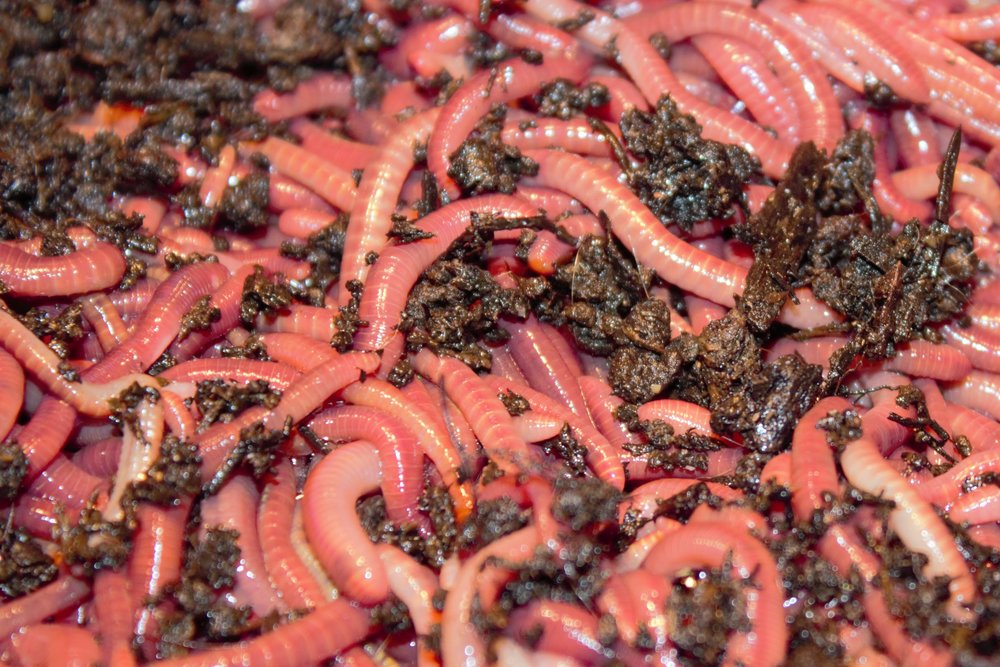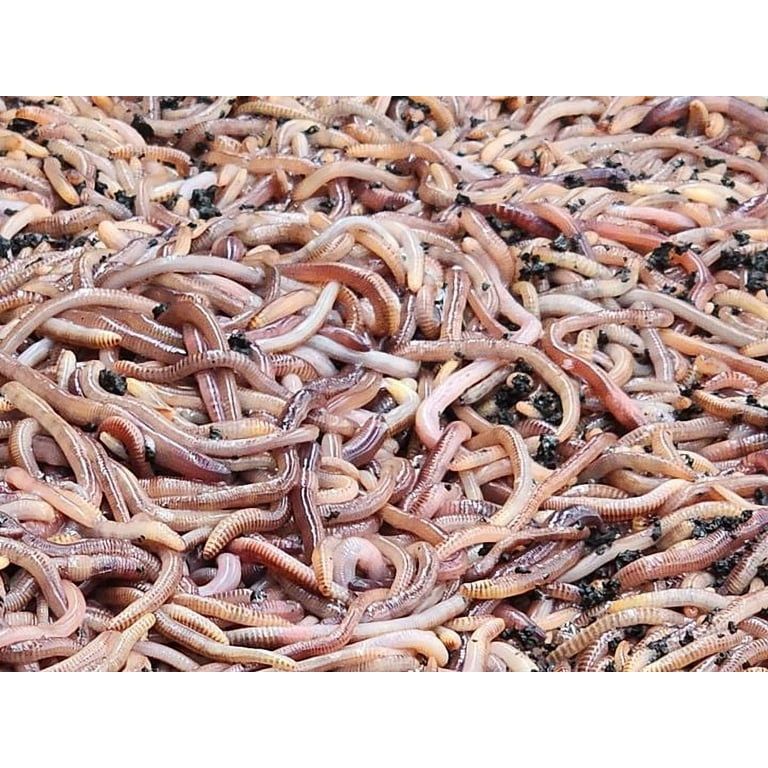Just How Red Wigglers Can Increase Your Organic Waste Recycling
Red wigglers stand for an essential component in enhancing organic waste recycling, effectively transforming day-to-day cooking area scraps and yard debris right into valuable worm castings. This process not just alleviates the quantity of waste sent out to land fills yet also improves dirt vigor, promoting much healthier plant growth without the demand for artificial plant foods. Comprehending the details of developing a vermicomposting system and the optimum look after these worms can dramatically amplify the benefits. The concern continues to be: exactly how can one effectively incorporate this method right into their routine to take full advantage of influence?

Benefits of Red Wigglers
Red wigglers, a kind of composting earthworm, offer many benefits that make them vital in natural waste recycling. These worms can process kitchen area scraps, garden waste, and even paper items, transforming them into nutrient-rich castings.
Furthermore, red wigglers enhance soil aeration and drain with their tunneling activities, advertising a healthier origin environment for plants. Their spreadings are rich in helpful microbes and vital nutrients, promoting robust plant development and improving soil framework (red wigglers). Furthermore, making use of red wigglers in composting is an eco-friendly alternative to chemical plant foods, which can have hazardous side results.
Additionally, vermicomposting with red wigglers is a low-maintenance and efficient method of recycling organic waste, making it accessible for homes and neighborhoods alike. Their rapid reproduction price ensures a stable supply for ongoing composting initiatives, further intensifying their benefits. On the whole, red wigglers function as a crucial component in lasting waste management and dirt improvement practices.
Establishing a Vermicomposting System
Developing an efficient vermicomposting system calls for careful preparation and consideration of different factors that contribute to its success. The foundation of a successful system begins with choosing an ideal container. Alternatives range from commercial containers to homemade choices, however it is essential that the container is well-ventilated and suitably sized to suit the variety of red wigglers.
Following, the option of bed linen material is crucial. Appropriate bed linens consists of shredded newspaper, cardboard, or coconut coir, which supplies both a habitat and a resource of carbon for the worms. The bed linen needs to be moistened yet not excessively wet to protect against anaerobic problems.
Preserving the optimal setting is essential. Red wigglers prosper in temperatures between 55 ° F and 77 ° F(13 ° C to 25 ° C )and need a pH degree around neutral. Checking dampness levels is additionally vital, as excessive dampness can lead to odor issues, while inadequate can dry out the worms.
Finally, placing the vermicomposting system in a shaded area protected from direct sunshine will aid maintain a secure environment. With these considerations in mind, one can successfully establish up a thriving vermicomposting system that boosts natural waste recycling.
What to Feed Red Wigglers
Feeding red wigglers the right products is essential to preserving a healthy vermicomposting system. These worms prosper on a varied diet largely composed of natural matter, that includes fruit and vegetable scraps, coffee grounds, smashed eggshells, and shredded paper. It is vital to stay clear of feeding them meat, milk, oily foods, or any processed things, as these can produce smells, draw in insects, and lead to an unhealthy atmosphere.
A balanced diet plan for red wigglers advertises optimum digestion and nutrient production. Go for a mix of environment-friendly materials, high in nitrogen, such as vegetable peels and turf clippings, and brownish products, rich in carbon, like dried out fallen leaves and cardboard. This balance guarantees a lasting food resource while maintaining moisture click over here degrees in the worm container.
Moreover, it is recommended to slice or shred larger scraps to quicken decomposition and make the food a lot more available to the worms. Regularly keeping an eye on the intake price will certainly aid figure out the appropriate amount to feed, preventing overfeeding and maintaining a flourishing environment. By supplying an ideal diet, you not only sustain the wellness of red wigglers yet likewise boost the performance of your vermicomposting efforts.
Preserving Your Worm Container
To guarantee the health and performance of your vermicomposting system, maintaining your worm bin is crucial. Routine tracking of wetness levels is essential; the bed linens needs to be wet however not soaked. If it ends up being too damp, excess wetness can lead to anaerobic conditions, harming your worms. Alternatively, if it is also completely dry, worms might come to be non-active or die.
Temperature is another vital variable. Ideally, the worm container ought to be kept between 55 ° F and 77 ° F(13 ° C to 25 ° C) Extreme temperatures can stress or eliminate your worms. To accomplish this, place your bin in a climate-controlled environment far from straight sunshine or heat resources.
Delicately transforming the bed linen with a yard fork every few weeks will help freshen the product and avoid compaction - red wigglers. If this takes place, lower feeding and include even more carbon-rich materials like shredded paper or cardboard.
(red wigglers for sale)
Making Use Of Worm Castings in Horticulture

Worm spreadings, commonly described as "black gold" by garden enthusiasts, are a very nutritious natural fertilizer that can significantly enhance dirt wellness and plant development. These spreadings are generated by red wigglers as they digest raw material, resulting in an abundant, dark, brittle compound including helpful bacteria.
Incorporating worm spreadings right into yard soil improves its framework, oygenation, and dampness retention, creating an optimum setting for origin advancement. The high nutrient web content of worm castings, consisting of nitrogen, phosphorus, and potassium, contributes to vigorous plant growth and enhanced yields. In addition, worm spreadings include essential trace element and enzymes that advertise the general health of plants, allowing them to better stand up to parasites and diseases.
Worm spreadings can be used straight to the soil or combined into potting mixes for container horticulture. A slim layer spread over garden beds or included in compost stacks can likewise improve the microbial activity and nutrient account of the garden compost. As a lasting and environment-friendly fertilizer option, worm castings sustain natural gardening practices while reducing reliance on synthetic plant foods, thus promoting a much healthier ecosystem.
Final Thought
In verdict, the integration of red wigglers into natural waste reusing methods presents a feasible service for boosting soil health and wellness and promoting lasting horticulture techniques. By effectively decomposing cooking area scraps and yard waste, red wigglers add to nutrient-rich worm castings that improve soil oygenation and moisture retention. This green approach not only minimizes garbage dump contributions but also diminishes the reliance on chemical fertilizers, ultimately cultivating much healthier ecosystems and accountable waste monitoring methods.